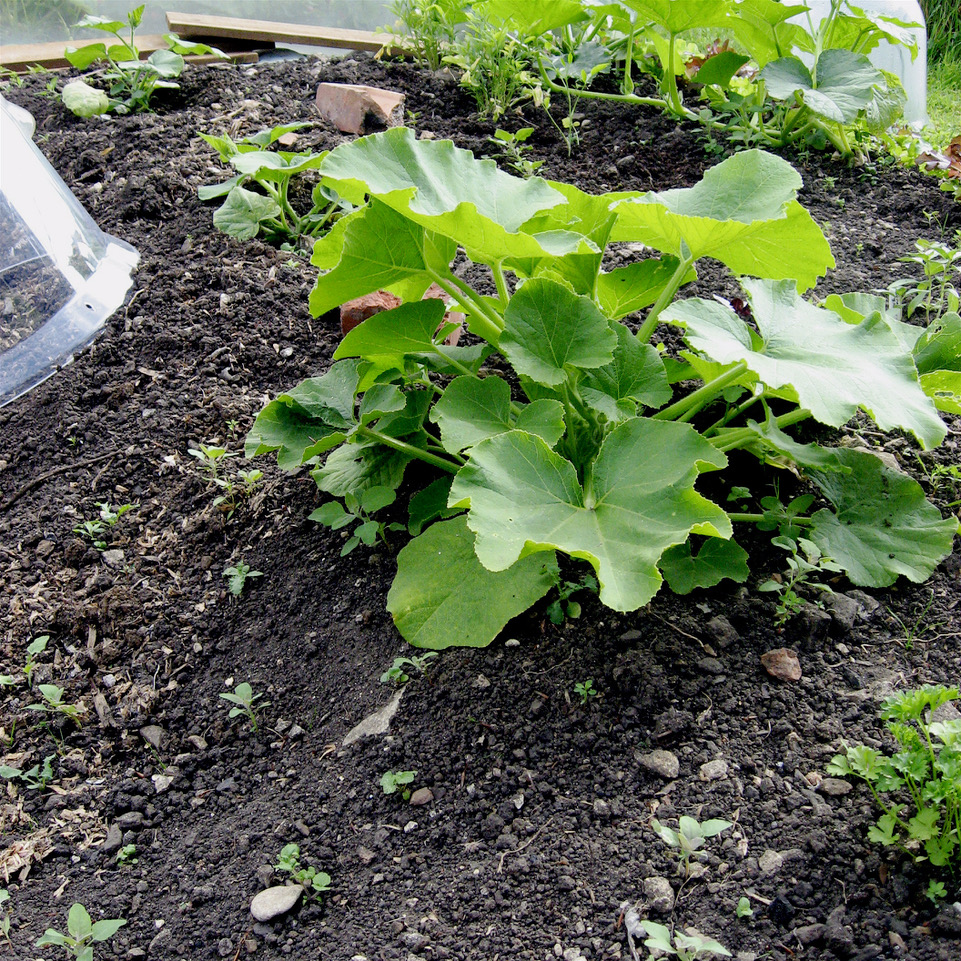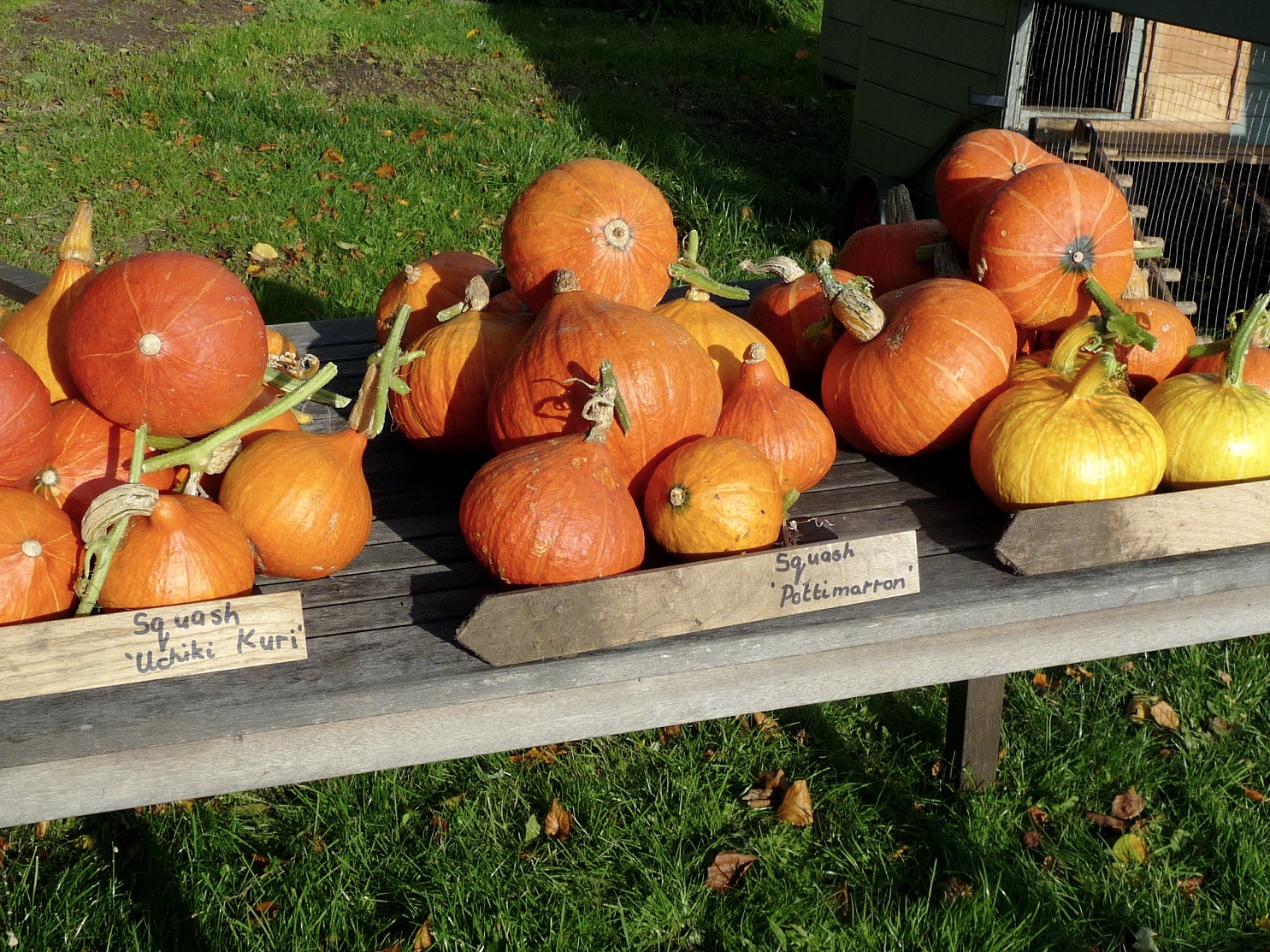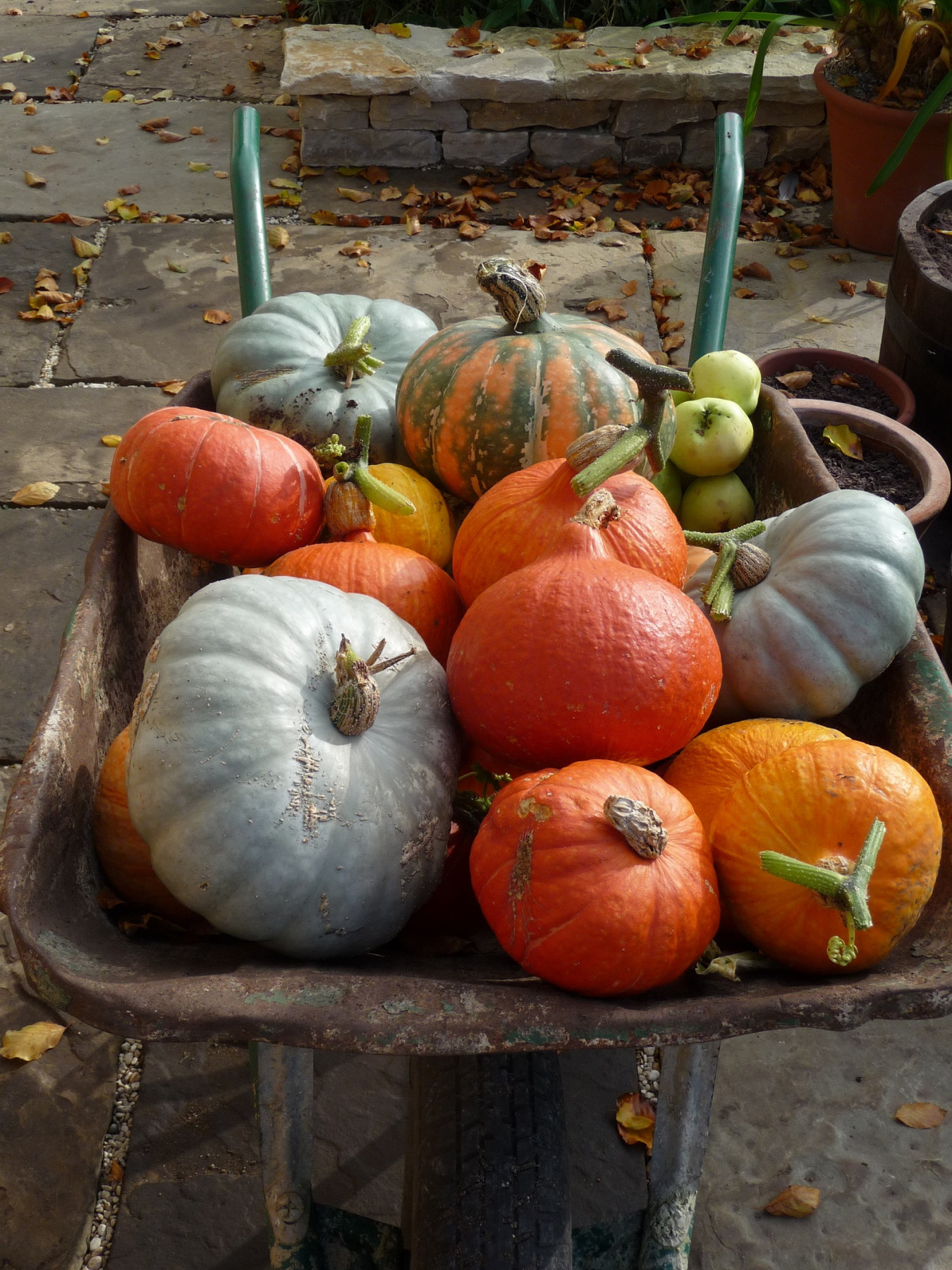
Towards the middle of the month, you won’t be able to escape from the pumpkin! They’ll be festooned outside shops everywhere and, by the end of October, they’ll be blackened by candle soot and perched limply on walls, following the Halloween revels. We think of this festival as an American custom. However the tradition of making lanterns from vegetables began in In Ireland and Scotland. Scary faces were carved into turnips or potatoes and a piece of coal or peat provided the necessary glow. The lanterns were placed in windows or near doors on All Hallows Eve, the evening before spirits or ghosts are said to roam free. The scary face on the lantern would hopefully protect the family from any harm. When Scottish and Irish immigrants arrived in America the traditioned carried on.
The old Irish legend goes that Stingy Jack invited the Devil to have a drink with him, but didn’t want to pay, so he persuaded the Devil to turn himself into a coin that Jack could use to buy their drinks. Once the Devil did so, Jack put the coin into his pocket next to a silver cross and this prevented the Devil from changing back into himself. Jack eventually freed the Devil but made him promise not to bother him for one year and he also forbade him to claim his soul, should he die.
The next year, Jack got the Devil to climb into a tree to pick a piece of fruit and then carved a sign of the cross into the tree’s bark. This prevented the Devil from coming down and he had to promise Jack not to bother him for ten years. When Jack died he wasn’t allowed into heaven or hell, but was left to wander through the dark night with only a burning coal to light his way. The lanterns were known as Jack-o-lanterns.
Many Irish and Scottish people emigrated to America die to land clearances and famine. They took the tradition with them and the large orange pumpkins, grown by native tribes, proved perfect. The native field pumpkin ( Cucerbita pepo) grew well in America, a country where summers are often warmer than here.
The native Americans used them widely in ceremonies, as a food and as a medicine. They ate them freshly cooked and dried strips in the summer sun for winter use. The seeds were eaten to cure worms. It was a diuretic so it was used to cure bed wetting and urinary problems. The flesh is very nutritious and full of beta-carotene, vitamins and trace elements. They are one of the first baby foods recommended for weaning and they are considered one of the super foods.
By the early 19th century eating Pumpkin Pie on Thanksgiving, the fourth Thursday in November, had become a tradition in America. George Washington issued a decree in 1789 setting up a national day for prayer and thanksgiving. However Pumpkin Pie, a later addition in America, was an English and French tradition first. The pumpkin or ‘pompion’ was being eaten in Tudor England following its introduction from France and a pumpkin pie recipes appears in Hannah Woolley’s The Gentlewoman’s Companion first published in 1675.

In Britain we prefer the winter squash, another vegetable used widely by American natives, because it develops a chestnut flavour if it’s stored fro six weeks before being eaten. This cold period allows the starches to turn to sugar, just as it does in parsnips. Toby Musgrave, writing in his excellent book Heritage Fruit and Vegetables mentions two native American words – askutasquas and souotaersquasties. Both were understandably abbreviated to squash. The famous three sisters system of growing beans, maize and squashes together is an ancient Iroquois version of companion planting. It gave a calorie-rich diet of fresh and storable food. The beans climbed up the upright maize and the large leaves of the squash conserved moisture.
Winter squash ( Cucurbita maxima) and the Crookneck Squash ( C. moschata) were as important medicinally and nutritionally as the pumpkin ( C. pepo). Some winter squashes have grey skins and redder flesh and this type is thought to have arrived from South America in the 1700s on sailing ships coming from the West Indies. These were grown by native American tribes and then by settlers. In 1842 a woman named Elizabeth Hubbard mentioned a large grey tear-shaped squash to her neighbour, a seed trader named James J. H. Gregory. Mr. Gregory marketed as the Hubbard squash and ‘Blue Hubbard’ is still available today.
The smaller and rounder ‘Crown Prince’ has all the ‘Hubbard’ flavour and durability, but this round grey-skinned squash weighs in at a more manageable seven pounds. Grey-skinned Hubbard types crop well in Britain and they store for longer than orange-skinned squashes – which rarely last beyond the end of January. However the Hubbard types have thinner skins and can get frosted more easily than orange-skinned squashes – so be careful where you store them.
Japanese ‘kabocha’ squashes were introduced into Japan by Portuguese sailors travelling from Cambodia in 1541. The Portuguese name for squash was Cambodia abóbora and this became shortened by the Japanese to kabocha. Japanese market gardeners, who are still highly skilled in the art of vegetable growing, now raise squashes in roughly a hundred days – encouraged by the warm, wet Japanese summers.
The Japanese Red Onion squash, usually sold under than name ‘Uchiki Kuri’, is a tasty bright-orange squash that it’s probably from Hokkaido in Japan. Kuri is a Japanese term for squash. It’s similar in shape to another orange squash called ‘Potimarron’, a heritage French variety with a name that means small chestnut. Despite its French name, it’s thought to have originated in China. The teardrop-shaped fruits have a strong chestnut flavour.

The other type of squash often seen in supermarkets is the butternut squash. This long custard-yellow squash, with a bulbous end, originally from Guatemala and Mexico so it needs lots of warmth. This can be grown in Britain, but only in warmer districts. ‘Sprinter’, which was bred for the cooler British climate by Tozer seeds, is mostly grown in the southern and eastern counties of Britain.
The butternut may be the most familiar to shoppers, but it’s the worst one to grow here unless you have a warm garden. My favourite orange squashes is ‘Sunshine’, an F1 variety. The seeds need to be sown in April, no sooner, and having a Hartley greenhouse is a huge advantage with all cucurbits such as cucumbers, squashes and courgettes because these frost tender plants need warmth in order to germinate. I wouldn’t bother with tasteless, watery marrows or smaller squashes.
Use small 3 inch ( 9cm) pots of a good compost and place the large seeds vertically, to avoid them rotting. Children find them easy to handle. Water well and stand back, keeping them just short of dry. Repot if you have to, but don’t plant the them outside until early June and, if you can cover them at night, because this helps them to grow. Slugs can be a problem so harden them off first by standing them off the ground somewhere cool and airy. They cover the ground, and really get going after midsummer. Planting them close to early potatoes, which are lifted by August, works well. Once September arrives cut off the leaves to allow the sun to get the fruits. They make my winter, chopped up and roasted!
Supplierof Seeds
Kings Seeds ( fantastic value and a fantastic range of all vegetables)
www.kingsseeds.com /01376 570 000



